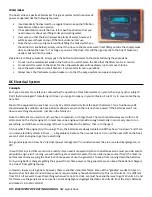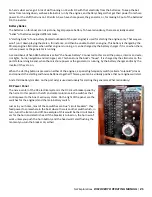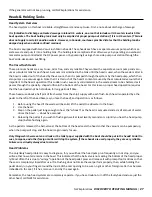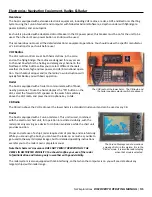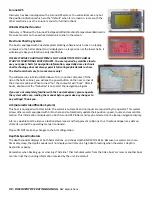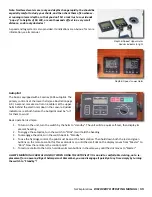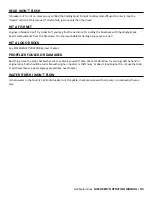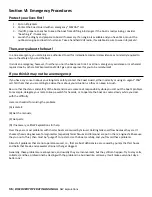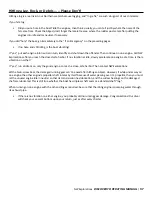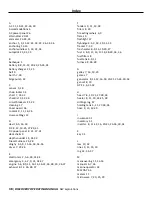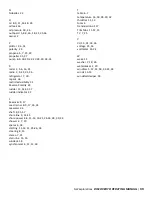
NW Explorations
DISCOVERY OPERATING MANUAL
|
33
Note: Northwest waters are rocky and depths change rapidly. You should be
especially careful to study your charts, and then check them often whenev-
er running in lesser depths, so that you don’t hit a rock! Just as our islands
“pop up” to heights of 50, 100, or even thousands of feet in a very small
distance, so do rocky obstacles!
A speed and log system is also provided. Its indications are obvious; for more
information, see its manual.
Autopilot
The boat is equipped with a Comnav 1001 autopilot. The
primary control is at the lower helm (see illustration page
4-9). A second, remote control on a cable is at the upper
helm behind the electronics door in the console. Rudder
indicators are at both helms; the Autopilot must be “on”
for them to work!
Basic operation is simple:
1. To turn on the unit, turn the switch by the helm to “standby”. The unit will do a quick self-test, then display its
present heading.
2. To engage the autopilot, turn the switch to “Pilot”. It will hold the heading.
3. To disengage the pilot, turn the switch back to “Standby”.
4. To use the flybridge control, the pilot must be on at the helm station. Then hold down both the red and green
buttons on the remote control for three seconds or so until the small dot on the display moves from “Master” to
“Rem”. Now the remote is the control point!
5. To restore control to the helm, hold down its two buttons in the same way until the dot moves to “Master”.
ALWAYS MAINTAIN A CAREFUL LOOKOUT WHEN USING THE AUTOPILOT! It is an aid to comfortable cruising, not a re-
placement for an aware, diligent helmsperson! Remember, you can disengage it quickly at any time simply by turning
the switch to “Standby”!
Depth & Speed: Upper Helm.
Rudder indicator to right.
Depth & Speed: Lower Helm


